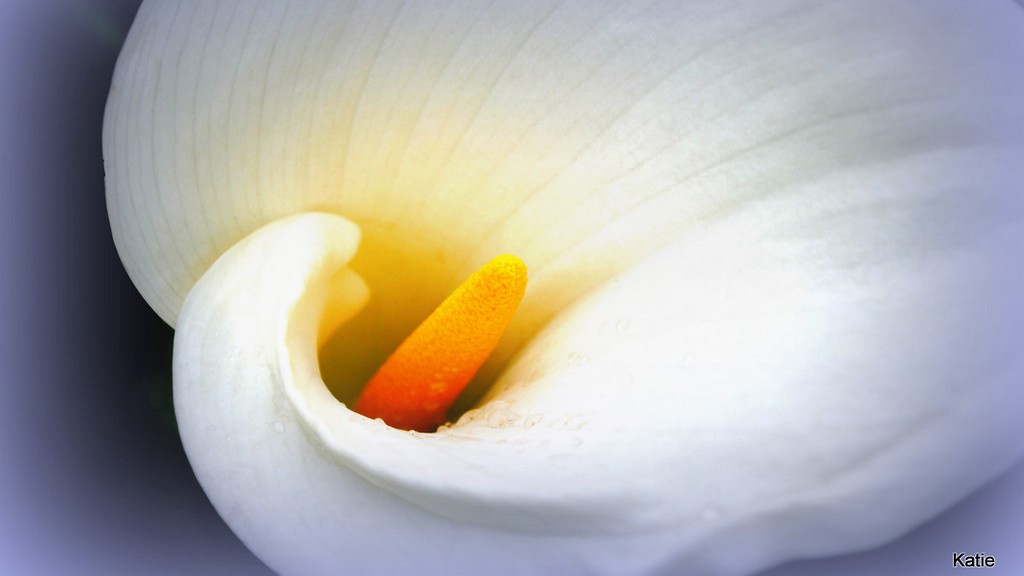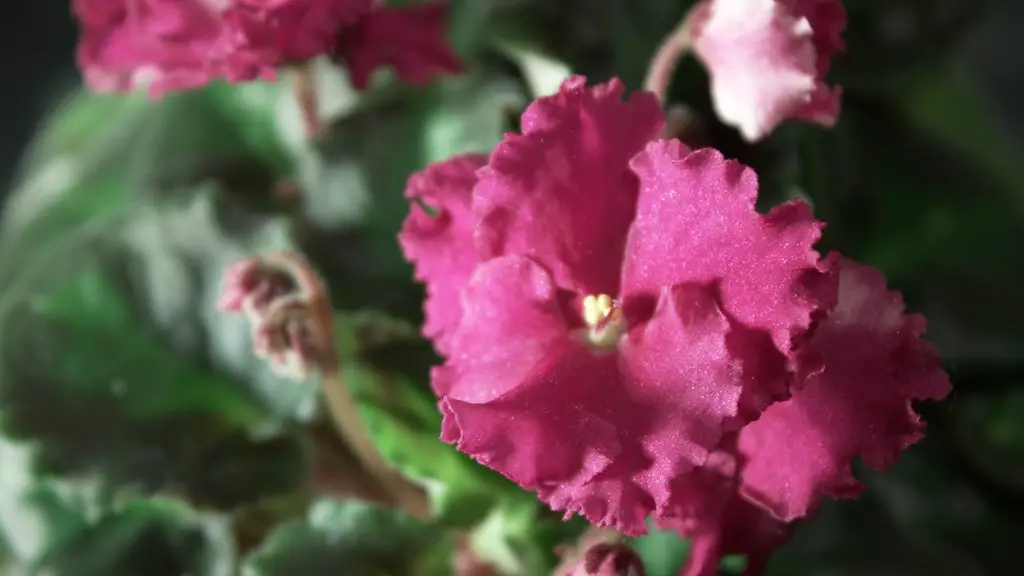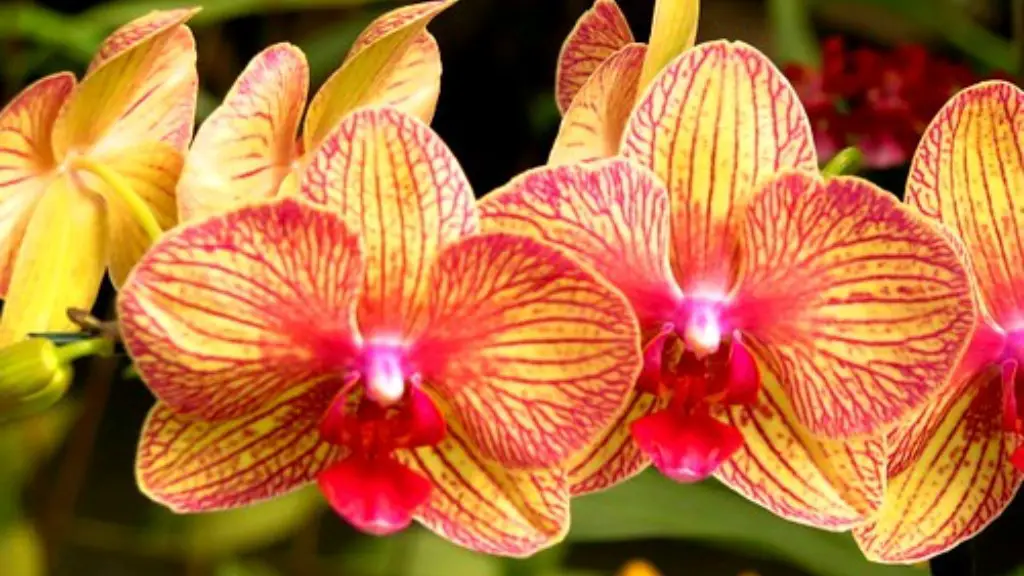African violets are a type of flowering plant that is native to Africa. They are known for their beautiful flowers that come in a variety of colors. However, african violets can lose their blooms for several reasons. One reason is that the plant is not getting enough light. African violets need bright, indirect light in order to bloom. Another reason is that the plant is not getting enough water. African violets need to be kept moist, but not too wet. Overwatering can cause the plant to lose its blooms. Finally, african violets need to be fertilized on a regular basis. If the plant is not getting the nutrients it needs, it will not bloom.
One possible reason why African violets lose their blooms is because they are not getting enough light. African violets need 12 to 14 hours of bright, indirect light every day in order to bloom. If they are not getting enough light, they will produce fewer blooms. Another possible reason why African violets lose their blooms is because the temperature is too cold. African violets like to be in a warm room with a temperature of 70-75 degrees Fahrenheit. If the temperature is too cold, they will not bloom as much.
How do I get my African violet to bloom again?
If you want to encourage your African violet to bloom again, here are eight things you can do:
1. Make sure it has enough light. African violets need 12-14 hours of light every day, so if it’s not getting enough light, that could be why it’s not blooming.
2. Turn up the humidity. African violets like humid conditions, so increasing the humidity around your plant can help encourage blooming.
3. Replenish essential nutrients. If your African violet is lacking in nutrients, that can also affect its blooming. Make sure to fertilize regularly and provide other essential nutrients like magnesium and calcium.
4. Keep it pleasant. African violets like moderate temperatures and consistent watering, so try to create conditions that are as close to ideal as possible.
5. Choose the right soil. African violets need a well-draining soil that’s also rich in organic matter.
6. Protect from pests and disease. Pests and diseases can also prevent African violets from blooming, so it’s important to keep an eye out for any signs of problems and address them promptly.
7. Constrict the roots. African v
If you’re having trouble getting your African violet to bloom, it’s likely because it’s not getting enough light. African violets need indirect sunlight, as direct sunlight can burn the leaves. Choose a north- or east- facing window for best results, and keep plants away from cold glass. Rotate the pot once a week so all leaves receive light.
How often should I water my African violet
A wicking system is a great way to make sure your African violets are never over watered. The way it works is you place the African violet in a container of water and the water is wicked up into the soil of the plant. This way the plant always has a consistent supply of moisture and you only have to water once a week.
If your African Violet plant has been over-watered, the soil will retain too much water. This retention of water will cause the leaves and /or leaf stems to turn soft, limp or mushy.
Can you use Miracle Grow on African violets?
African violets grow best in well-drained, slightly acidic soil. Miracle-Gro® Indoor Potting Mix is specially formulated to provide indoor plants like African violets with just the right growing environment.
Epsom salts are a great way to provide plants with essential magnesium and sulfur. These two minerals are needed to produce beautiful blooms and healthy foliage. To use, mix one and a half teaspoons of Epsom salts in a quart of tepid water and swirl to dissolve. Water your African violets (below the leaves) with this solution once a month.
How many times a year do African violets bloom?
If you want your African violets to bloom year-round, you need to provide the correct conditions. African violets typically bloom 10-12 months out of the year, with each bloom lasting 2-3 weeks.
When repotting a violet, it is best to cut off the bottom of the root ball, cutting as much off the root ball as the neck is long. This will allow new roots to grow from the neck. Try to repot your violet more often to avoid having to cut a large amount of the root ball away.
Should African violets be misted
Water your African violet carefully to avoid leaf spotting and crown rot. Use room-temperature water and mist the foliage rather than drenching it.
African violets can make great houseplants because they can live a long time – up to 50 years with proper care! One important part of caring for African violets is repotting them when needed. The trick is knowing when to repot and what size pot and type of soil to use.
Signs that an African violet needs to be repotted include:
-The plant is growing out of the pot
-The potting mix is breaking down and getting compacted
-The plant is not blooming as much as it used to
If you notice any of these signs, it’s time to repot your African violet! When repotting, use a pot that is only slightly larger than the current one and fill it with a light, well-draining potting mix. Be careful not to damage the roots when repotting and water the plant well afterwards. With proper care, your African violet can continue to bloom and thrive for many years to come!
What kills African violets?
Weeding your lawn by hand can be tedious and time-consuming, especially if you have a lot of wild violets. Instead, use a broadleaf herbicide that contains 2,4-D or Dicamba. These chemicals will selectively kill the violets without damaging the grass. Another great wild violet herbicide is called Drive (quinclorac).
It’s important to be aware of the quality of your tap water when growing African violets. Chlorine levels can fluctuate depending on the season, and in some areas tap water may have high levels of chlorine, chloramines, or dissolved solids. All of these things can adversely affect your plants. If you’re unsure about the quality of yourtap water, it’s best to use filtered or distilled water to be safe.
Do African violets need bigger pots
When choosing a pot for your African violet, it’s best to go with a smaller option. African violets do best when they are slightly pot-bound, so a smaller pot will help to encourage growth. Plus, if you have a standard African violet plant, a starter pot should be about 3-4 inches in diameter.
It is important to water your plants regularly to encourage blooming. Water from the bottom with room temperature water by placing the plastic grower’s pot in water, and allowing the plant to absorb the water ( not more than 30 minutes ).
When should African violets be repotted?
African Violets are best repotted with fresh potting soil, at least twice a year, and whenever the plant becomes rootbound. rootbound means that the Violet has outgrown its current pot to the extent that its roots are growing out and around the rootball.
African violets need bright, indirect light to thrive. A spot near an east- or north-facing window is usually a good choice. Avoid putting them in direct sunlight, as this can cause leaf scorching. If you don’t have a suitable window, you can place African violets under a fluorescent light fixture with two 40-watt tubes.
Final Words
One reason African violets may lose their blooms is due to lack of light. African violets need 12-14 hours of bright, indirect light per day in order to bloom. If they are not getting enough light, they will drop their blooms. Another reason African violets may lose their blooms is due to too much direct sunlight. Direct sunlight can cause the flowers to fade and drop off. Finally, African violets may lose their blooms if they are not getting enough water. African violets need to be kept evenly moist, but not soggy. If the soil is too dry or too wet, the flowers will drop off.
The most common reason for African violets to lose their blooms is simply because they are not getting enough light. African violets need 12 to 14 hours of bright, indirect sunlight everyday in order to produce blooms. If they are not getting enough light, they will eventually stop blooming. Another reason for African violets to lose their blooms is because they are not getting enough water. African violets need to be kept evenly moist, but not wet. If the soil is too dry, the plant will stop blooming.





